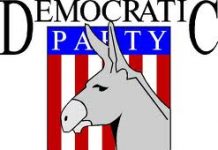By Lesley Weidenbener
TheStatehouseFile.com
Lesley Weidenbener, managing editor, TheStatehouseFile.com
INDIANAPOLIS – Rarely does a legislative session go by when gambling issues don’t bubble up – and even become part of the last minute negotiations needed for agreement on a budget or other significant new law.
![]() But key policymakers and gambling experts said 2014 might be an exception.
But key policymakers and gambling experts said 2014 might be an exception.
At a legislative preview conference last week, Casino Association of Indiana President Mike Smith said the gambling industry won’t take the lead on any proposals when lawmakers return to the Statehouse in January.
“I don’t expect much to take place in the short session,†Smith said, describing the 2-1/2 month length of the 2014 meeting. Lawmakers meet for four months in odd-numbered years when they draft a budget.
Ed Feigenbaum, publisher of the Indiana Gaming Insight newsletter, echoed those thoughts.
“There aren’t really going to be a whole lot of initiatives we can think about this year,†said Feigenbaum, who has been covering gambling issues since Indiana first approved casino gaming 25 years ago.
“The downturn of revenues is not news,†he said. “There’s not a whole lot we can do about it.â€
State tax receipts from gambling are indeed down – but that is as expected. New casinos in Ohio have been draining customers from Indiana’s operations for about a year. And even earlier, the economic downturn had depressed the industry.
Consider this:
-Â Â Â Â Â Â In 2009, wagering at the casinos topped $2.8 billion. Last year, it was $2.56 billion, an 11.8 percent drop.
-      The drop in wagering taxes paid to the state is even greater – 15 percent – because the tax is graduated. The more a casino makes, the higher rate it pays. When wagering is down, casinos reach the higher rates more slowly.
-      The casino industry employed 16,000 people in 2000, a number that has dropped to roughly 12,000 today. That’s even though two more casinos have opened since then.
Last year, lawmakers considered a number of measures meant to bolster the industry. They included letting the racetrack-based casinos have live dealers at their table games, letting the riverboat casinos move inland and rebuild on land, and giving the casinos a tax break on some of their marketing expenses.
Only the latter proposal became law and it has saved the casinos millions of dollars. But it’s unclear whether it has actually staved off losses to new competition.
Smith said last week that lawmakers will likely introduce bills to authorize live dealers and land-based casinos again next year. But he said they aren’t likely to get much attention.
In fact, new House Public Policy Chairman Tom Dermody, R-LaPorte, was circumspect in predicting whether the bills could move forward at all – even though he supported the concept of live dealers last year. Now, Dermody said, he can’t just consider his own opinion or the impact on his district.
As the chair of the committee that covers gambling, Dermody said he must consider the impact on the larger industry and the state. And it’s clear he’s still trying to figure that out.
“I don’t think anything is going to happen this session,†he said.
But that doesn’t mean gambling issues are dead. Smith made clear that the industry will be back in 2015 to push for a rethinking of the way the casino industry is regulated and taxed.
“We have to look at our whole business model,†Smith said. That could mean a larger look at the casinos’ tax rates, which tend to be higher in Indiana than in other states.
But Smith said there’s not time for that in a short session.
“I would expect that in 2015,†he said, “we’ll see a pretty concerted effort on a lot of properties’ part to try to improve their marketplace.â€
Lesley Weidenbener is executive editor of TheStatehouseFile.com, a news website powered by Franklin College journalism students.




